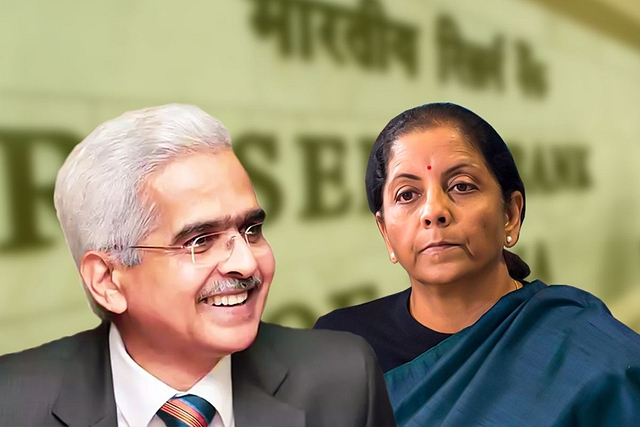
Why It’s Important For RBI To Transfer Surplus Capital Now
The transfer of excess capital from the RBI is important as now is the time to provide public sector banks with adequate resources so that they are ready when the credit revival takes off.
So, a sizeable proportion of transfer must take place this financial year, irrespective of the number of phases.
A recent debate between the North Block and Mint Street has been with regards to the cash reserves of India’s central bank. This debate invoked sharp reactions with many experts supporting such a transfer while others terming it as an attempt to raid Reserve Bank of India’s (RBI’s) surplus capital.
The Bimal Jalan-led committee was supposed to take a final decision on the subject and we have witnessed the delay in the submission of the report since the last few months.
However, it now appears that the report is almost ready, and that there will be some transfer to the government, in a phased manner.
There are three important aspects over here, first is to do with the quantum of transfer of reserves, second is to do with the pace of the transfer and the third relates to how this money is utilised by the government.
The fact that this transfer comes at a time of a growth slowdown is important as it will help the government compensate for some of its revenue shortfalls. A good use of whatever amount of transfer the government receives would be towards bank recapitalisation.
But let us ignore the first and the third aspects for a moment and focus solely on the second aspect, which is to do with the pace of transfers. In all likelihood, the committee may advocate for a phased transfer over three to five years instead of a single transfer.
One can understand why the committee wants to be cautious with the transfer of excess capital to the government.
For starters, this will ensure a healthy stream of income for the government over a period of time, which means it will have to continue to be prudent with its spending.
This follows from concerns that a single large transfer to the government may be received as a windfall, which may result in expansion of expenditure that may otherwise be unsustainable.
While these are valid concerns with respect to the way this transfer must take place, there is another aspect that needs to be adequately considered. This is to do with the current growth recession fuelled by a consumption slowdown.
Therefore, clearly the government does need to take some hard decisions with respect to economic revival.
We saw a lot of these decisions during Finance Minister Nirmala Sitharaman’s recent press conference, and in all likelihood, they will have a strong impact in terms of revival of our economic growth over the next couple of months.
However, due to this slowdown, the government is experiencing revenue shortfalls, and it is unlikely to meet its revenue targets for the current financial year.
Therefore, under such a situation, it must not reduce its expenditure and let the fiscal deficit expand due to revenue shortfalls.
The focus should be on non-tax revenue through disinvestment and privatisation rather than tax revenues for the next two years while the government undertakes reforms like the Direct Tax Code.
The press conference indicated that the government too is thinking in this direction, even though they reaffirmed their commitment towards the fiscal consolidation path.
This is precisely why the pace of transfer of reserves is important.
If the government is to deviate a bit from its deficit targets while it maintains its expenditure, then it will need additional resources in order to fix our banking system.
The transfer of excess capital from the RBI becomes important as it can enable the government to front-load the recapitalisation of our banks. This has been announced by the Finance Minister during the press conference and this is likely to have a positive impact on credit-offtake.
Therefore, whatever be the amount of the total transfer, irrespective of the number of phases, the committee must recommend a sizeable proportion of the transfer to happen in this financial year.
Now is the time to provide our public sector banks with adequate resources so that they are well equipped to provide credit once credit demand revives over the coming months.